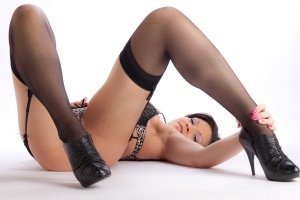Buzzfeed recently released a video tackling several of the most common lesbian stereotypes. In the video, Buzzfeed sends out a group of lesbian women to ask gay men questions about the most commonly held misconceptions.
The video highlights a wide variety of facets of the gay male community and drives home the fact that not everyone who falls under the LGBTQA umbrella is dealing with the same things.
1. Lesbians don’t need men
As a lesbian, you know that there are many myths about you out there. These myths can be detrimental to your health and well-being, as they fuel prejudice against you and others in your community.
One of the most popular lesbian stereotypes is that you don’t need men in your life. This is a misconception that is rooted in male chauvinism and misogyny.
However, if you’re a lesbian, you should know that this isn’t always true. In fact, here are a few reasons why you might actually need a man in your life. It might seem a little intimidating to admit, but it could be the best decision you ever made. You’re likely to find a partner who will help you reach your full potential.
2. Lesbians aren’t religious
One of the most common stereotypes about lesbians is that they aren’t religious. While it’s true that many gay people have religious beliefs, there are also plenty of non-religious queers.
In the United States, Christian denominations have a range of views on same-sex sexuality and gender variance. Some, such as Unitarians and Buddhists, are very liberal, accepting homosexuality as a valid human choice; others, such as most evangelicals and most historically black denominations, discourage it.
Some lesbians and gay Christians have embraced their queerness in order to challenge the ingrained notion that same-sex relationships are immoral. But many lesbians and gay Christians have struggled to reconcile their faith with their queerness.
3. Lesbians aren’t smart
Some people seem to think that lesbians are smarter than their straight counterparts, but that’s not really the case. They’re just as susceptible to misogyny, and they don’t enjoy the same benefits of education.
Some gay and lesbian characters on TV, such as the ones in Queer as Folk or Queer Eye for the Straight Guy, are presented in cliched ways that don’t represent the full spectrum of LGBTQ people. This leads to inaccurate or incomplete assumptions about what gays and lesbians do in their spare time, how they dress, and how they interact with other people.
4. Lesbians aren’t athletic
The stereotype that lesbians aren’t athletic is common, but it’s not true. In fact, it’s not even true for straight women who want to play sports.
There are a few reasons why. One is that being a lesbian can lead to adverse societal attitudes, family rejection and internalized homophobia, which can have negative health effects across the life span.
Another reason is that lesbians can feel a lot of pressure to conform to traditional gender roles and stop playing sports. For example, Alaina Sudeith, a sophomore at UCLA, says that she’s felt pressure from her peers to become a “tomboy” when she first joined the water polo team.
Despite these challenges, many lesbians continue to play sports throughout their lives, and some even choose to come out in middle age. These athletes often find support from their coaches and teammates, who can help them deal with a range of issues related to sexuality.
5. Lesbians aren’t beautiful
If you’ve ever watched gay or lesbian characters on television, you know they all tend to act and look very cliched. This is especially true of the way gay and lesbian men are portrayed in media.
But that doesn’t mean they’re any less beautiful than your average straight guy or girl. It just means that these stereotypes aren’t representative of all LGBTQ people.
A common example of this is the lipstick lesbian stereotype, which refers to a feminine lesbian who’s obsessed with makeup and dresses. They can walk in stilettos, aren’t afraid of dresses and know how to apply liquid eyeliner flawlessly.

